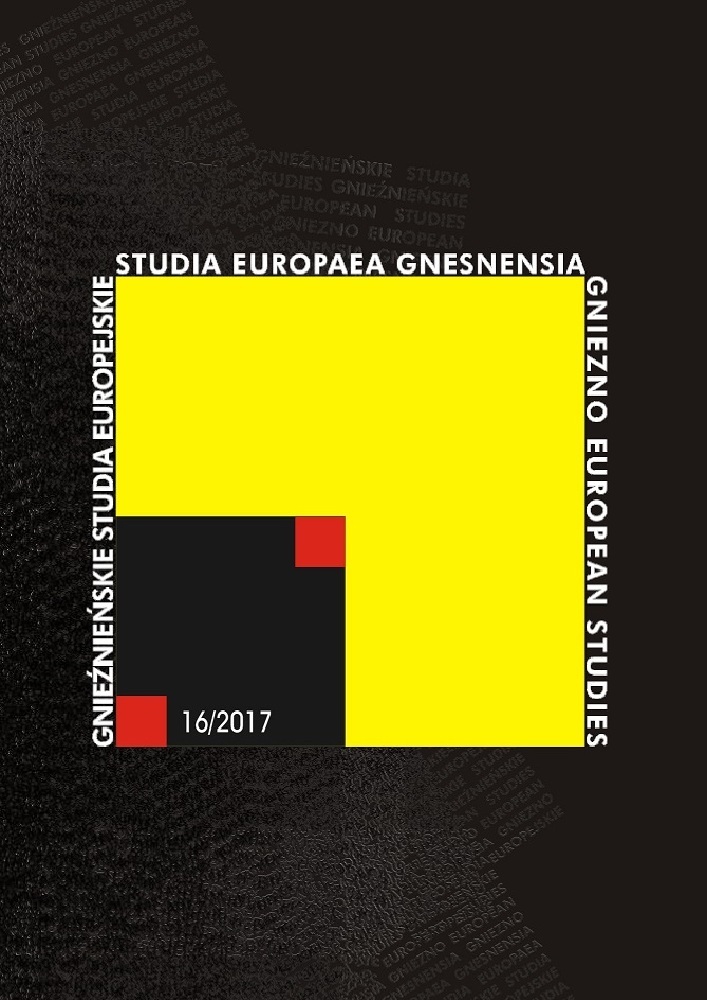Résumé
Active involvement of army veterans in local governance and religious life of provincial towns and villages of the Roman Empire is generally determined as the ratio of number of retired soldiers who were magistrates and priests to the total number of veterans, known from all the inscriptions found on the territory of a province. In the opinion of the author, this approach may lead to a misperception of this aspect of
the former soldiers’ life and consequently needs to be revised. This paper presents an alternative method of resolving the problem and outlines perspectives for its practical application on the example of material relating to the province of Lower Moesia.
Références
Aparaschivei D., Municipiul Troesmis. Instituţii şi elite, Peuce (S. N.) 3-4, 2005-2006, pp. 189- -208.
Aparaschivei D., Oraşele romane de la Dunărea Inferioară (secolele I-III p. Chr.), Iaşi 2010.
Aricescu A., Armata în Dobrogea Romană, Bucharest 1977.
Arnold W.T., The Roman System of Provincial Administration to the Accession of Constantine the Great, Oxford 1906.
Bărbulescu-Munteanu M., Rădulescu A., Descoperiri epigrafice recente, Pontica 14, 1981, pp. 159-170.
Bărbulescu-Munteanu M., Rădulescu A., Colonia Ulpia Zermizegetusa pe o inscripţie din Dobrogea, Pontica 15, 1982, pp. 153-159.
Beshevliev V., Epigrafski prinosi, Sofia 1952.
Birley E., Some Legionary Centurions, Zeitschrift für Papyrologie und Epigraphik 79, 1989, pp. 114-128.
Boyanov I., Rimskite veterani v Dolna Miziya i Trakiya (I-III v.), Sofia 2008.
Boyanov I., Veterans and Society in Lower Moesia and Thrace during the Principate, [in:] L. Vagalinski, N. Sharankov, S. Torbatov (ed.), The Lower Danube Roman Limes (1st-6th c. AD), Sofia 2012, pp. 251-269.
Cagnat R., Evocati, [in:] Ch. Daramberg, E. Saglio, E. Pottier (ed.), Dictionnaire des antiquités grecques et romaines d’après les textes et les monuments 2, Paris 1892, pp. 866-868.
Fiebiger, Evocati, [in:] G. Wissowa (ed.), Paulys Realencyclopädie der classischen Altertums-wissenschaft 6, Stuttgart 1907, col. 1145-1152.
Gerov B., Romanizmăt mezhdu Dunava i Balkana 2, Godishnik na Sofiyskiya universitet. Filologicheski fakultet 48, 1952-1953, pp. 307-415.
Gerov B., Zemevladenieto v rimska Trakiya i Miziya (I-III v.), Godishnik na Sofiyskiya universitet. Fakultet po klasicheski i novi filologii 72, 2, 1977, pp. 1-173.
Groag L. Minicius Natalis Quadronius Verus, [in:] W. Kroll (ed.), Paulys Realencyclopädie der classischen Altertumswissenschaft 15, Stuttgart 1932, col. 1836-1842.
Ivanov R., Dolnodunavskata otbranitelna sistema mezhdu Dortikum i Durostorum ot Avgust do Mavrikiy, Sofia 1999.
Kolosovskaya Yu.K., K voprosu o sotsial’noy strukture rimskogo obshchestva v I-III vv. n. e. (collegia veteranorum), Vestnik drevney istorii 29, 4, 1969, pp. 122-129.
Królczyk K., Tituli veteranorum. Veteraneninschriften aus den Donauprovinzen des Römischen Reiches (1.-3. Jh. n. Chr.), Poznań 2005.
Królczyk K., Veteranen in den Donauprovinzen des Römischen Reiches (I.-III. Jh. n. Chr.), Poznań 2009.
Lebedeva G.Ye., Rannevizantiyskoye zakonodatel’stvo o veteranakh (po dannym kodeksov Feodosiya i Yustiniana), [in:] Z.V. Udal’tsova (ed.), Vizantiyskiye ocherki, Moscow 1977, pp. 149-157.
Makhlayuk A.V., Armiya Rimskoy imperii. Ocherki traditsiy i mental’nosti, Nizhniy Nov¬gorod 2000.
Martemyanov A., Veterany rimskoy armii – magistraty i zhretsy v Nizhney Mezii, Res Histo¬rica 38, 2014, pp. 11-33.
Matei-Popescu F., The Roman Army in Moesia Inferior, Bucharest 2010.
Mihailescu-Bîrliba L., L’inscription de T. Iulius Saturninus à Dierna et l’affermage du publicum portorii Illyrici, Studia Antiqua et Archaeologica 16, 2010, pp. 145-152.
Mihailescu-Bîrliba L., La mortalité des légionnaires en Mésie Inférieure, Studia Antiqua et Archaeologica 20, 2014, pp. 171-183.
Mihailescu-Bîrliba L., Piftor V., Les vétérans membres de l’élite civile en Dobroudja romaine, Peuce (S. N.) 3-4, 2005-2006, pp. 209-216.
Mrozewicz L., Rozwój ustroju municypalnego a postępy romanizacji w Mezji Dolnej, Poznań 1982.
Mrozewicz L., Munizipalaristokratie in Moesia Inferior, Eos 70, 1, 1982, pp. 299-318.
Mrozewicz L., Victoria Aug(usta) Panthea Sanctissima, Zeitschrift für Papyrologie und Epigraphik 57, 1984, pp. 181-184.
Mrozewicz L., Arystokracja municypalna w rzymskich prowincjach nad Renem i Dunajem w okresie Wczesnego Cesarstwa, Poznań 1989.
Mrozewicz L., Die Veteranen in den Munizipalräten an Rhein und Donau zur Hohen Kaiserzeit (I.-III. Jh.), Eos 77, 1, 1989, pp. 65-81.
Neumann A., Veterani, [in:] K. Ziegler (ed.), Paulys Realencyclopädie der classischen Altertumswissenschaft Suppl. 9, Stuttgart 1962, col. 1601-1609.
Petrusheva Z., Veteranite prez kăsnata antichnost, Minalo 11, 3, 2004, pp. 18-29.
Ritterling E., Legio. Bestand, Verteilung und kriegerische Betätigung der Legionen des stehenden Heeres von Augustus bis Diocletian, [in:] W. Kroll (ed.), Paulys Realency¬clopädie der classischen Altertumswissenschaft 12, Stuttgart 1924-1925, col. 1211-1829.
Sarnowski T., Die ritterlichen Tribunen der legio I Italica, [in:] L. Mrozewicz, K. Ilski (ed.), Prosopographica, Poznań 1993, pp. 63-80.
Tacheva M., Vlast i sotsium v rimska Miziya i Trakiya, Sofia 2000.
Thomasson B.E., Laterculi Praesidium 1, Göteborg 2009.
Velkov V., Aleksandrov G., Epigrafski pametnitsi ot Montana i rayona, Montana 1994.
Wolff H., Die Entwicklung der Veteranenprivilegien vom Beginn des 1. Jahrhunderts v. Chr. bis auf Konstantin d. Gr., [in:] W. Eck, H. Wolff H. (ed.), Heer und Integrationspolitik. Die römischen Militärdiplome als historische Quelle, Cologne-Vienna 1986, pp. 44-115.
